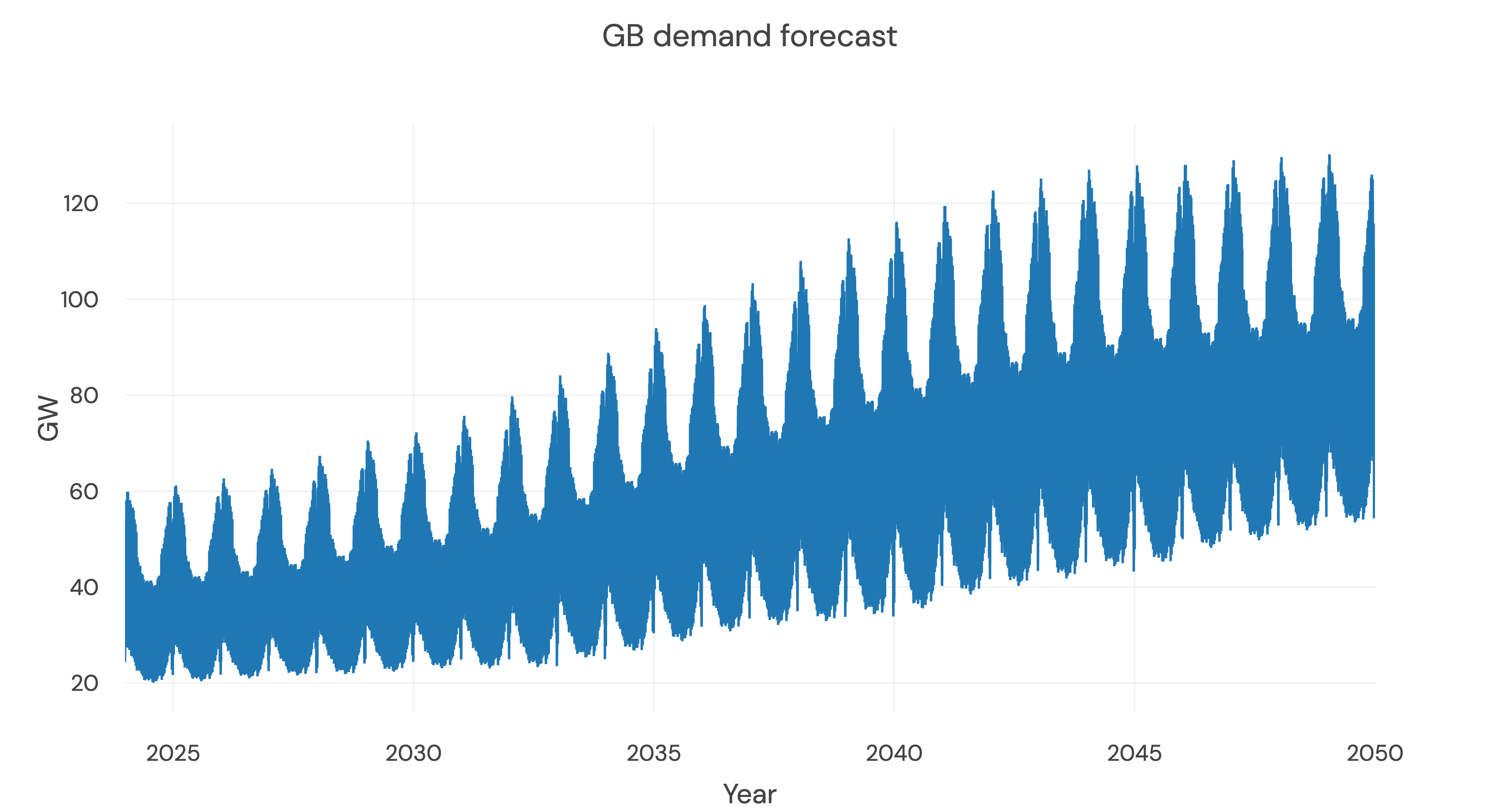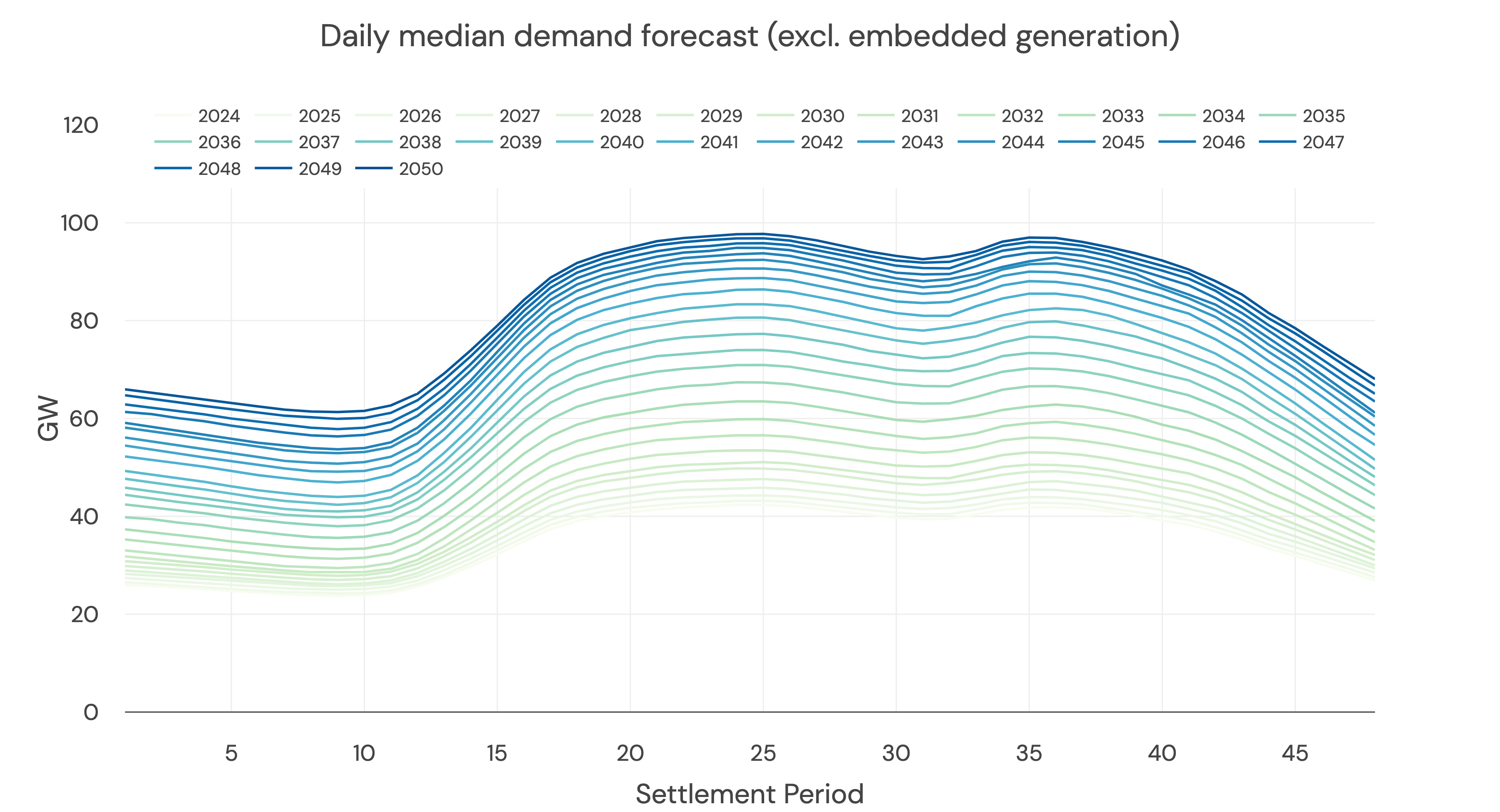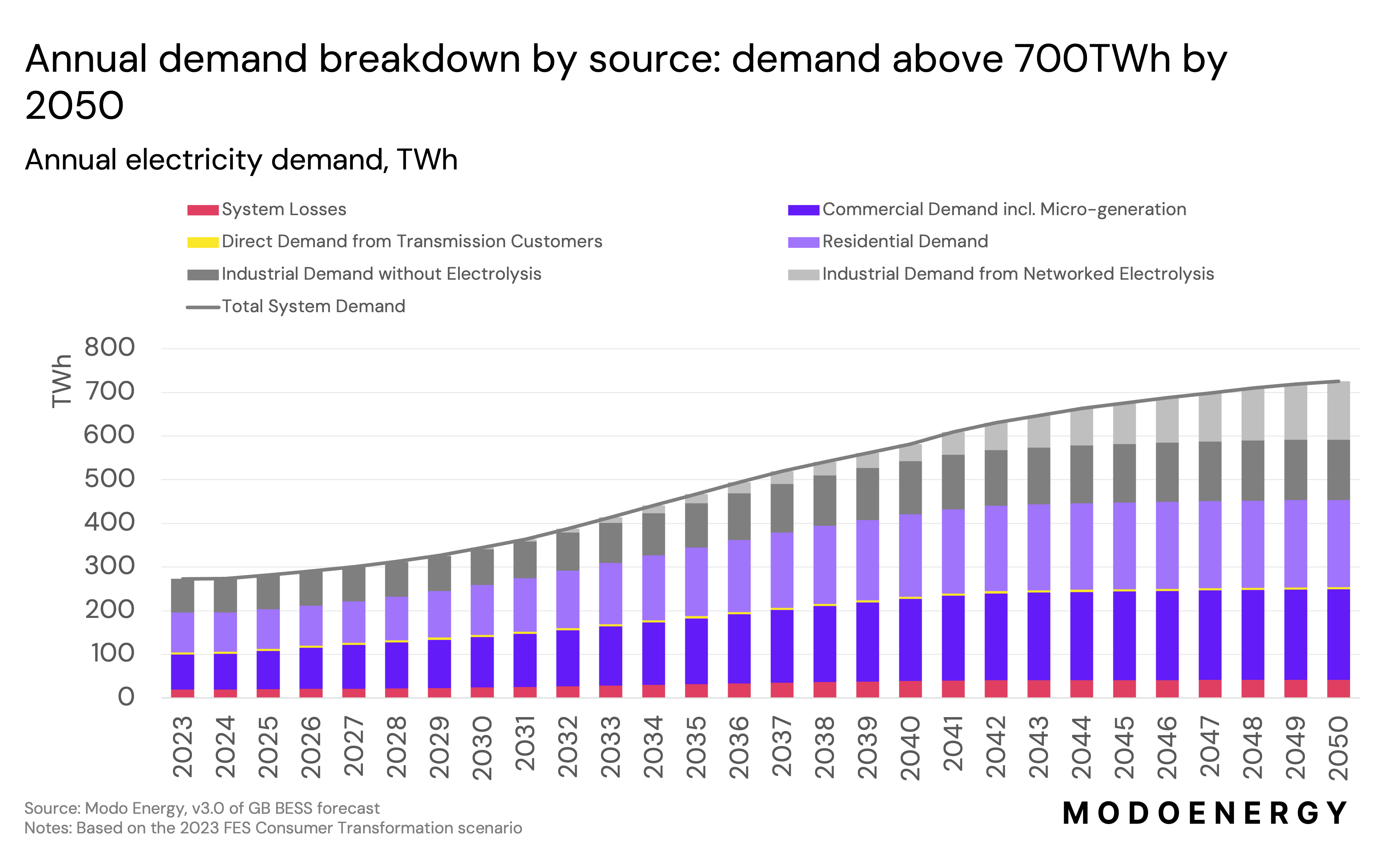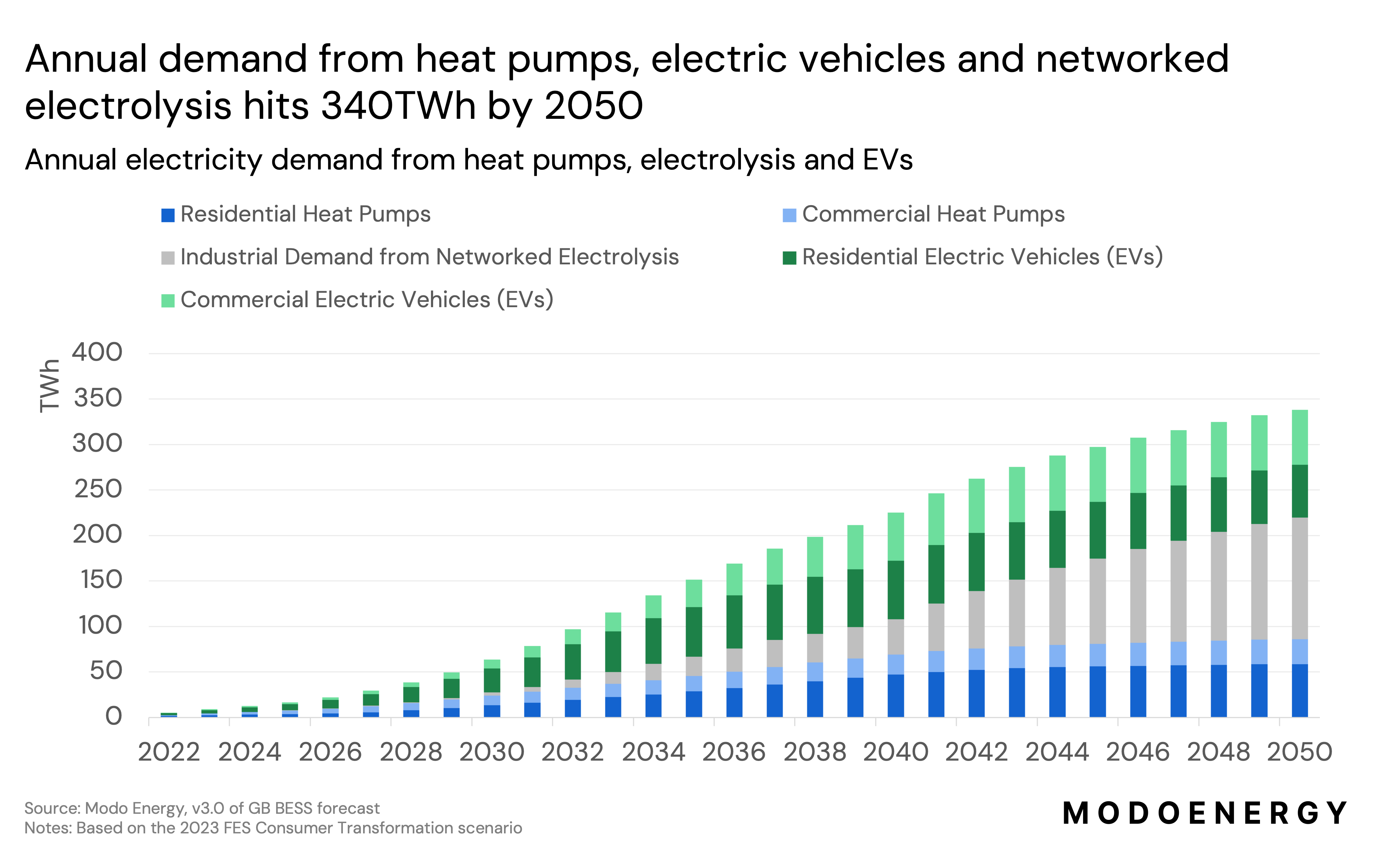Demand (v31)
In the last few years, demand has gone down. In future, it will go up as energy use is increasingly electrified.
We look at the changing shape of demand over the last 15 years: generally, we've been using less electricity. Daily and yearly minimums have been decreasing (as have the peaks). But, with the electrification of heat, industry and transport, this is expected to change, and demand will increase.
We use the FES numbers that give the maximum and minimum demand per year. These are quoted without transmission and distribution losses - ie excluding the losses of around 2% of energy due to the resistance of the lines that transport power around the country. The annual maximum gives the winter peak (when demand is highest) and annual minimum gives the 2pm summer Sunday minimum (when demand is lowest).
Then, we build a half-hourly demand shape around these based on a time-series analysis of historical data. This means using past behaviours on time of day, day of week, month of year, etc, to model the future.
This is our starting point for modelling demand. To get the final shape of demand, we need to overlay the Demand Side Response activated by the appropriate wholesale price, more on this later.


We model demand without embedded generation or losses
Embedded generation refers to electricity generation or storage that is connected to the distribution network, rather than the transmission network. According to the ESO, embedded generation accounts for 29% of generation capacity on the electricity grid in GB. Embedded generation presents a problem for the ESO as they don't have a real-time view of most of it.
We don't include embedded generation in our demand forecast, because it already exists in the supply stack, and we don't want to double-count it. We also model it without transmission and distribution network losses - i.e. demand represents what all the generators on the system need to produce.
Therefore, there is no solar dip in the middle of the day - that comes later once we add embedded solar in.
Looking at the sources of demand in more detail


Updated 2 months ago